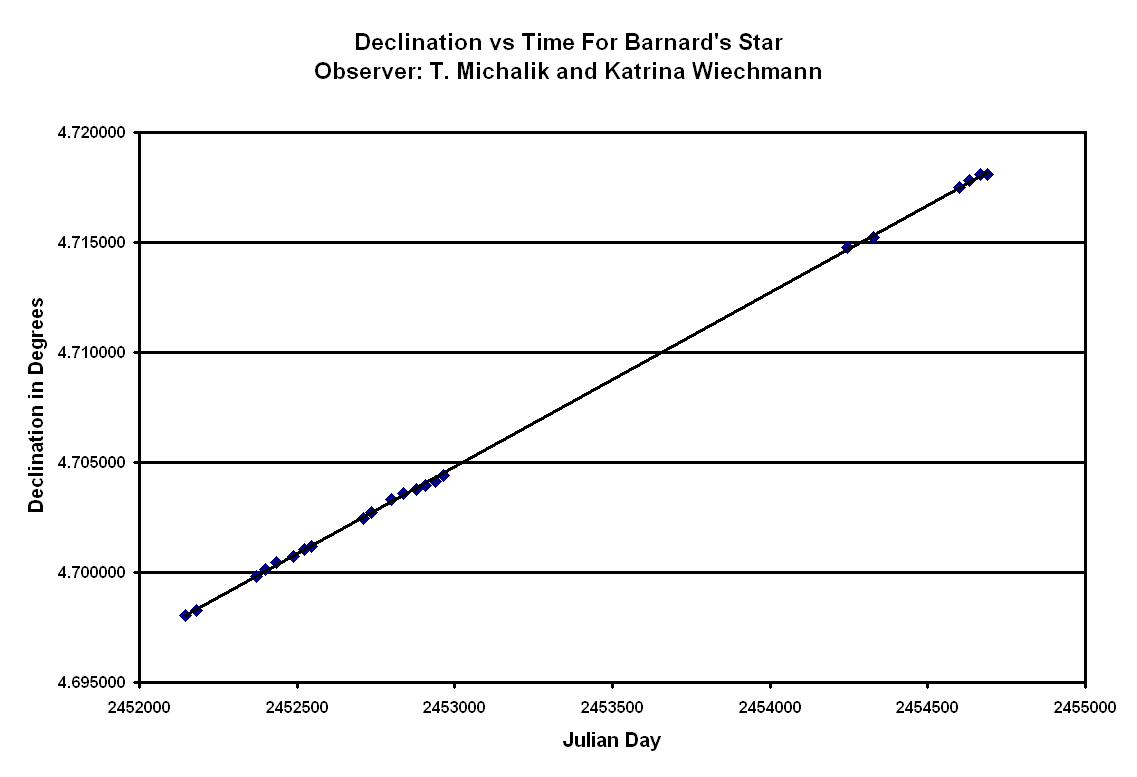
MEASURING THE PROPER MOTION OF BARNARD'S STAR
The red dwarf star known as Barnard's Star is 5.94 light years away in the constellation Ophiuchus. This star is the second closest star to Earth after the Alpha Centauri system. It has the largest known proper motion of any star!
Barnard's Star moves about 10.3 arc-seconds per year across the celestial sphere perpendicular to the line of sight from Earth. At a distance of 5.94 light years this transverse angular motion gives a transverse velocity of 89 km/sec relative to Earth. Barnard's Star also has a radially inward component of velocity (not measured by us at Winfree Observatory) of 108 km/sec relative to Earth.
This relatively rapid movement means Barnard's Star will eventually move out of the constellation Ophiuchus, through Hercules, through Lyra, and into Draco in 10,000 years. In 10,000 years Barnard's Star will make its closest approach to Earth at a distance of 3.8 light years. At that time it will brighten by a full magnitude, and its proper motion will increase to 26 arc-seconds per year.
Senior physics major, Katrina Wiechmann, and I used images of Barnard's Star made at Winfree Observatory between August 22, 2001 and August 11, 2008 to measure the angular change in position of Barnard's Star relative to the celestial coordinate system. The change occurs mostly in the north-south celestial coordinate called declination. (Declination is similar to latitude.) The graph below shows the change in declination over time.
